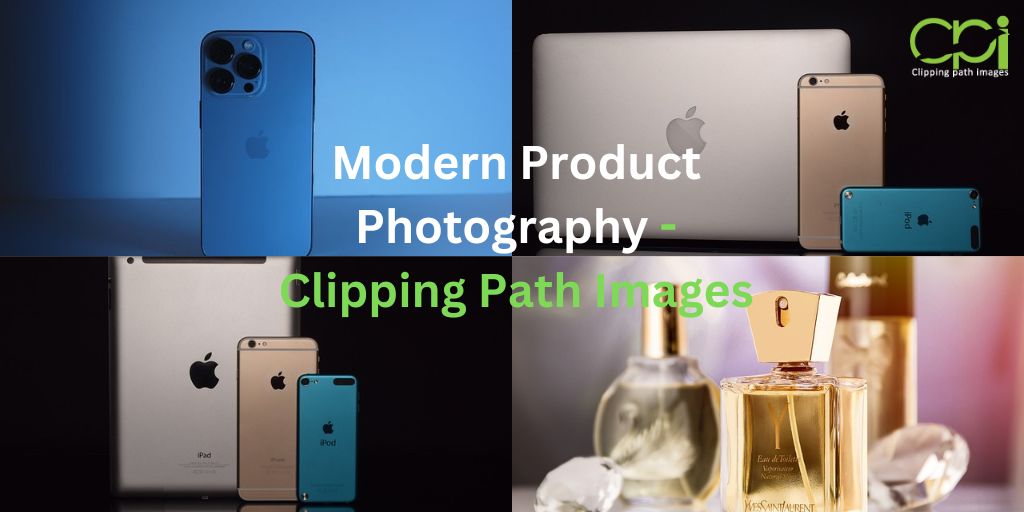
Welcome to the world of modern product photography! In this guide presented by CPI, we will share valuable tips and over 20 creative ideas to help you elevate your product photography game. Whether you’re an e-commerce entrepreneur or a photography enthusiast, get ready to learn how to capture eye-catching product photos that drive engagement, boost sales, and showcase your products in the best possible light. Let’s dive in!
What is Product Photography for eCommerce?

Delve into the captivating world of eCommerce, where visuals hold the key to unlocking customer engagement and driving sales. Among the crucial elements of this visual narrative lies “Product Photography for eCommerce.”
This art form transcends mere image-capturing and delves into the realm of presenting products in the most alluring and persuasive way imaginable. In this brief exploration, we unravel the essence of Product Photography for eCommerce, its paramount importance in the digital marketplace, and the essential techniques that empower businesses to leave a lasting impact on their online audience. Prepare to unveil the secrets behind captivating product images that effortlessly entice and convert potential buyers into loyal customers.
Key Elements of eCommerce Product Photography
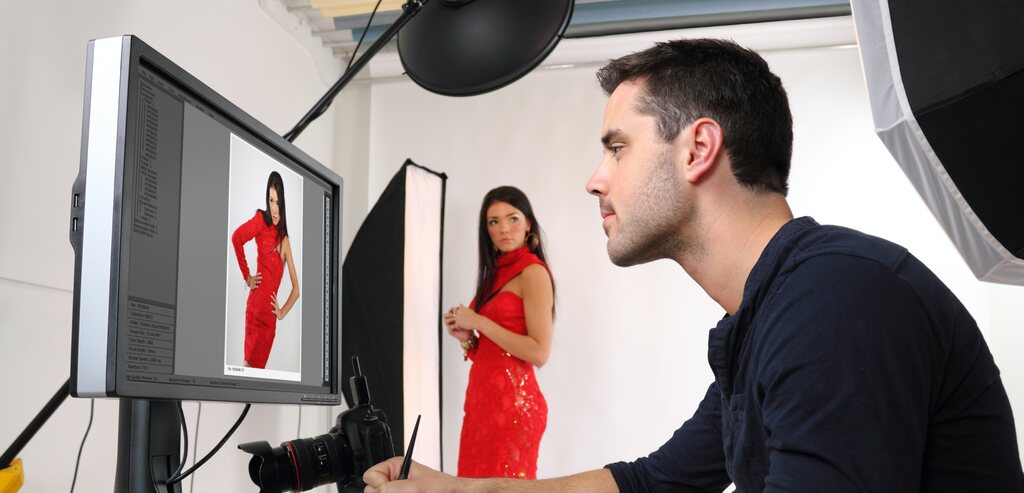
When it comes to eCommerce product photography, there are several key elements that contribute to capturing high-quality visuals that attract customers and increase sales. These elements include:
1. Lighting
Proper lighting is crucial to showcase your products effectively. Light sources should be diffused and evenly distributed to avoid harsh shadows or overexposure. Softbox lighting or natural light with a reflector can be used to achieve desirable results. Consider the colour temperature of the light source to ensure accurate colour representation.
2. Background
The background you choose for your product photos can greatly impact the overall presentation. A clean, uncluttered background is often preferred to direct the viewers’ attention solely to the product. A solid white or light-coloured background is commonly used, but depending on your brand and product, you may opt for contextual backgrounds or lifestyle settings.
3. Composition
The composition of your product images is crucial for creating visually appealing photos. Use the rule of thirds to frame your subject appropriately, and experiment with different angles and perspectives to highlight unique features or characteristics. Make sure the product is the main focus and consider leaving enough negative space for text or other design elements.
4. Product Styling
How you style and arrange your products can greatly impact the overall perception of quality and desirability. Pay attention to details like positioning, cleanliness, symmetry, and any accompanying accessories or props that enhance the product’s visual appeal. Styling should align with your brand’s aesthetic and target audience’s preferences.
5. Focus And Sharpness

How you style and arrange your products can greatly impact the overall perception of quality and desirability. Pay attention to details like positioning, cleanliness, symmetry, and any accompanying accessories or props that enhance the product’s visual appeal. Styling should align with your brand’s aesthetic and target audience’s preferences.
6. Resolution And Image Quality
High-resolution images are essential for eCommerce, as customers often want to zoom in and examine the product details. Aim for sharp and clear images that capture the product’s textures, colours, and features accurately. Provide customers with multiple images from different angles to give a comprehensive view of the product.
7. Consistency
Maintaining a consistent photography style and aesthetic across your product images is crucial to establish a cohesive brand presence. Consistency in lighting, background, composition, and overall image style will help create a recognizable and professional look for your eCommerce website.
8. Post-Processing
Post-processing plays a role in enhancing and refining your product photos. Adjustments like exposure, colour correction, and background retouching can be applied to ensure the images accurately represent your product. However, it is important to find a balance and avoid over-editing, as customers still want an accurate portrayal of the product they will receive.
Remember, the purpose of eCommerce product photography is to provide customers with an accurate representation of the products they are purchasing. By focusing on these key elements, you can create visually appealing and enticing product images that effectively communicate the value and desirability of your products.
Evolution of Modern Product Photography
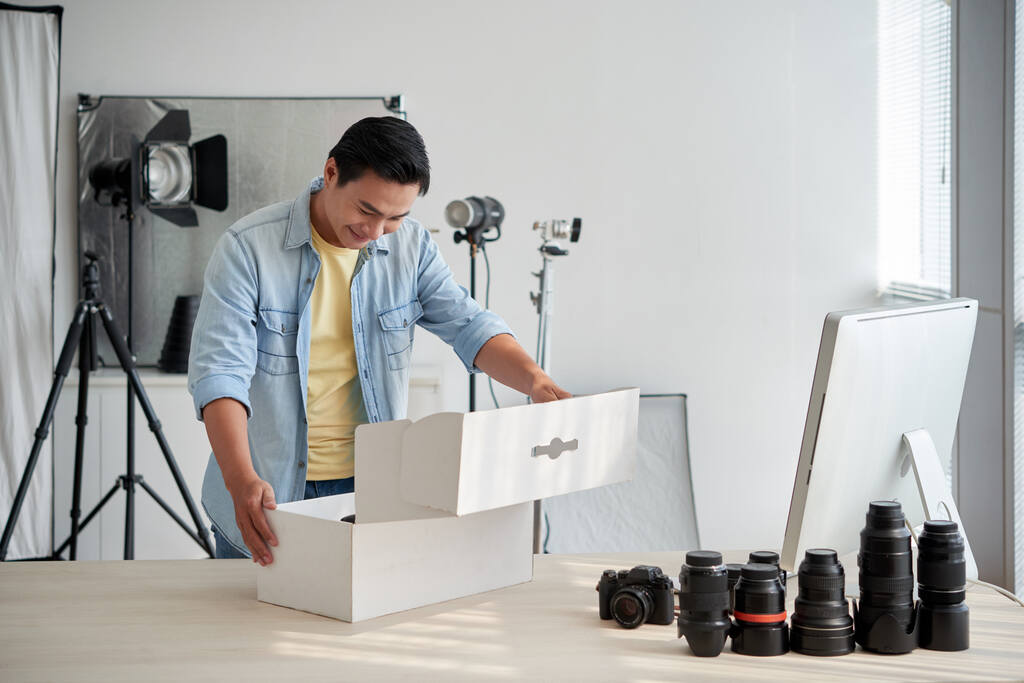
Modern product photography has evolved significantly over the years, driven by advancements in technology, changes in consumer behaviour, and the rise of eCommerce. Let’s explore the key stages of this evolution:
1. Early Days Of Product Photography
In the early days of product photography, dating back to the late 19th century, the primary focus was on capturing a clear and accurate representation of the product. Black and white photography was prevalent, and lighting techniques were limited. Products were typically photographed on simple, plain backgrounds without much emphasis on aesthetics or creativity.
2. Introduction To Color Photography
With the introduction of colour photography in the mid-20th century, product images began to display more vibrant and realistic colours. This advancement allowed for a better representation of product details and facilitated more engaging visual communication. Colourful props and backgrounds were sometimes used to enhance the aesthetic appeal of the images.
3. Studio Photography And Controlled Environments
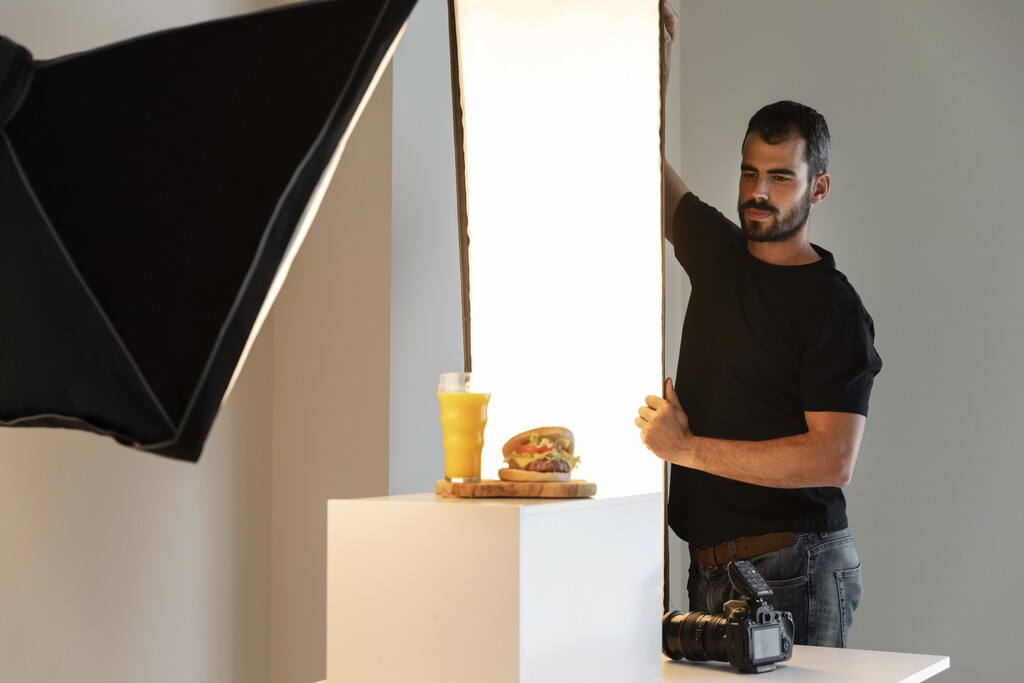
As product photography became more specialized, studios began to emerge dedicated solely to this purpose. Controlled environments with proper lighting setups, backgrounds, and equipment became standard. Photography studios provided optimal conditions for capturing high-quality product images, ensuring consistency and professionalism.
4. Digital Photography
The introduction of digital cameras revolutionized product photography. Digital cameras offered immediate feedback, eliminating the need for film processing and allowing photographers to experiment more freely. This advancement also enabled photographers to capture a larger number of images, facilitating more versatile product presentations.
5. Ecommerce And Online Shopping

The rise of eCommerce and online shopping had a profound impact on product photography. As physical stores transitioned to virtual platforms, the need for appealing product visuals became critical. Product images had to communicate the look, feel, and quality of the items accurately. The emphasis shifted towards capturing images that enticed potential customers and showcased products from different angles.
6. Lifestyle And Contextual Photography
With the growing influence of social media and lifestyle-oriented marketing, product photography began to incorporate lifestyle and contextual elements. Images started showcasing products in use or within relevant settings, helping consumers visualize how the products fit into their lives. This approach aimed to create emotional connections and enhance the overall shopping experience.
7. User-Generated Content And Social Proof
The integration of user-generated content (UGC) has also played a role in the evolution of product photography. Brands started encouraging customers to share their own photos and experiences with products, providing social proof and authenticity. UGC allows customers to see products in real-life scenarios, fostering trust and engagement.
8. 360-Degree Photography And Virtual Reality
In recent years, 360-degree photography and virtual reality (VR) have become popular trends in product visualization. 360-degree product images allow customers to explore items from all angles, improving the online shopping experience. Additionally, VR technology enables customers to virtually engage with products, enhancing their understanding and reducing uncertainty.
9. Interactive And Video Components
Along with static images, product photography has expanded to include video content and interactive elements. Videos allow for a more dynamic presentation, showcasing product features, durability, or practical usage. Interactive elements, such as product zoom, image sliders, or colour variant selectors, provide an engaging and informative experience for customers.
The evolution of modern product photography has been driven by the need to create visually appealing, informative, and persuasive visuals that meet the demands of an increasingly digital and visually oriented marketplace. As technology continues to advance, we can expect further innovations in product photography, leading to even more immersive and interactive shopping experiences.
Why Is E-commerce Product Photography Important?

E-commerce product photography is important for several reasons:
1. Visual Presentation
In the absence of physical interaction, product photography serves as the primary means to visually present products to online shoppers. High-quality and visually appealing images can capture attention, create interest, and entice potential buyers to explore further. It’s often the first impression customers have of a product, and a well-executed image can significantly impact their purchasing decision.
2. Conveying Product Details
Effective product photography showcases the key details and features of a product. Customers rely on these images to assess the quality, design, functionality, and suitability of the item. Clear and comprehensive visuals provide a better understanding of the product’s size, shape, texture, colour, and any unique characteristics. This information helps customers make informed decisions and reduces uncertainties or misunderstandings.
3. Building Trust And Credibility

Trust is critical in e-commerce, as customers cannot physically inspect the product before making a purchase. Quality product photography contributes to building trust and credibility. By providing accurate representations of the products, customers feel more confident in buying from a brand that takes the time and effort to present their products professionally. This trust can translate into repeat purchases and positive reviews.
4. Differentiation And Branding

E-commerce product photography allows you to showcase your products in a distinct and unique manner that aligns with your brand’s image. It provides an opportunity to highlight your brand’s aesthetic, values, and identity. Consistency in visual style across product images helps create a cohesive brand presence and builds recognition among customers. Effective product photography can differentiate your brand from competitors and contribute to brand loyalty.
5. Enhanced User Experience
Positive user experience is crucial for e-commerce success. High-quality product images contribute to a positive user experience by enabling customers to make informed decisions easily. When customers can clearly see the product and its details, they are more likely to trust the seller, make a purchase, and have a satisfying shopping experience. This, in turn, increases customer satisfaction and lowers the chances of returns or negative feedback.
6. Increased Sales And Conversion Rates

Well-executed product photography has a direct impact on sales and conversion rates. Visually appealing images capture customers’ attention, draw them into the product listing, and encourage them to proceed with the purchase. When customers are confident in their understanding of the product and its quality, they are more likely to convert into paying customers.
7. Shareability And Social Media Impact
Compelling product photography has the potential to be shared on social media platforms, expanding your brand’s visibility to a wider audience. Engaging visuals are more likely to be shared, liked, or commented on, leading to increased brand exposure and potential customer engagement. Social media platforms provide an avenue for customers to discover products through appealing visuals and drive traffic to your e-commerce website.
In summary, e-commerce product photography is important because it visually presents products to customers, conveys product details, builds trust, showcases the brand, enhances the user experience, increases sales and conversion rates, and enables social media impact. By investing in high-quality product photography, businesses can effectively engage and convert customers in the competitive world of online retail.
Tips for Taking High-Quality Product Photos
Taking high-quality product photos is essential for showcasing your products effectively and attracting customers. Here are some tips to help you capture professional-looking product photos:
1. Use Proper Lighting
Lighting is crucial for product photography. Ideally, use natural light by shooting near a window or set up a diffused lighting setup to avoid harsh shadows and overexposure. Consider using a lightbox or softbox to create even lighting.
2. Invest In A Good Camera
While a professional DSLR camera will give you the best results, you can still achieve high-quality photos with a modern smartphone that has a good camera. Make sure the camera you use has good resolution and the ability to adjust settings like focus, exposure, and white balance.
3. Choose The Right Background
Use a clean and simple background that won’t distract from the product. A solid white or light-coloured background is commonly used, but you can also choose contextual backgrounds or lifestyle settings that align with your brand and product.
4. Set Up A Tripod Or Stabilize The Camera
To ensure sharp and focused images, use a tripod or stabilize the camera to avoid camera shake. This is especially important in low-light situations or when using longer exposure times
5. Showcase Different Angles And Details
Capture multiple images from different angles to provide a comprehensive view of the product. Showcasing close-up shots of specific features, textures, or intricate details can also help customers understand the product better.
6. Pay Attention To Composition
Use the rule of thirds or other composition techniques to create visually pleasing images. Consider the placement of the product within the frame and leave enough negative space if you plan to add text or graphics later. Experiment with different angles and perspectives to highlight the product’s unique qualities.
7. Avoid Excessive Editing
While post-processing can enhance your photos, avoid over-editing, as it can make the product look unnatural or misleading. Make subtle adjustments to exposure, contrast, colour balance, and sharpness to ensure accurate representation while maintaining a natural look.
8. Optimize Image Resolution And Format
Ensure your images have high resolution (at least 1000 pixels on the longest side) to allow customers to zoom in and examine details. Save your images in a web-friendly format, such as JPEG or PNG, balancing file size and image quality.
9. Consistency Is Key
Maintain a consistent photography style and aesthetic across all your product images to create a cohesive brand presence. Consistency helps customers recognize your products and builds trust in your brand.
10. Consider Professional Help If Needed
If you’re not confident in your photography skills or want to achieve a high level of quality, consider hiring a professional product photographer. They have the expertise and equipment to capture stunning images that effectively showcase your products.
Remember, practice makes perfect. Experiment with different techniques, review your results and make adjustments as necessary to improve your product photography skills over time.
Tools For Product Photography
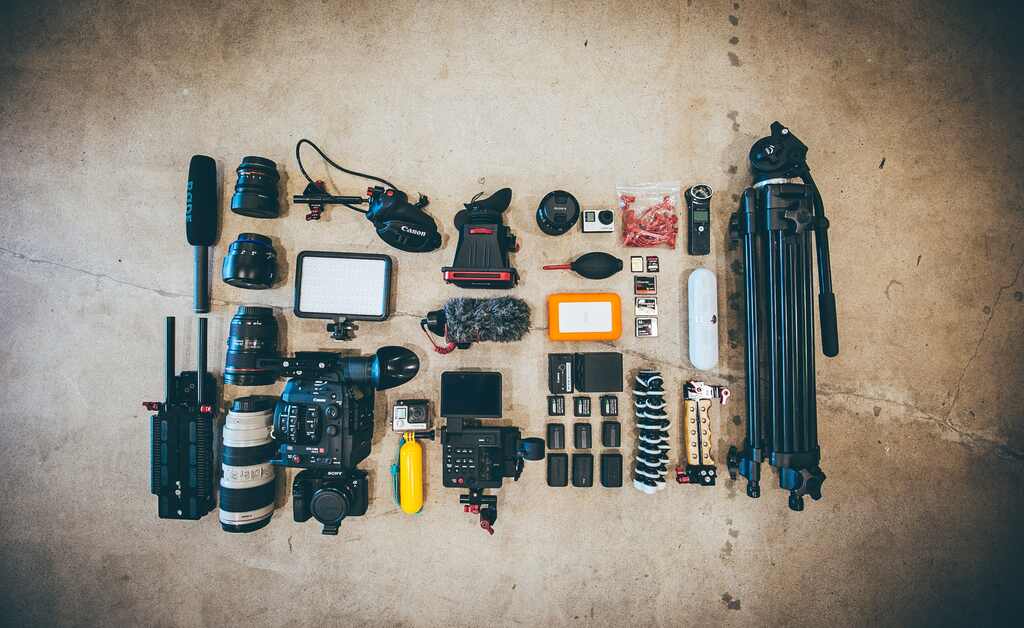
There are several tools and equipment that can help you capture high-quality product photos
1. Camera

A good camera is essential for product photography. Options include professional DSLR cameras, mirrorless cameras, or even high-quality smartphone cameras. Choose a camera that allows manual shooting settings and offers good resolution and image quality.
3. Lighting Equipment
Good lighting is crucial for product photography. Consider utilizing natural light whenever possible by shooting near a window. Alternatively, invest in lighting equipment such as diffusers, softboxes, or umbrella lights to create even and controlled lighting conditions.
4. Lightbox
A lightbox, also known as a product photography tent, is a portable folding box that diffuses external light sources to create soft and even lighting. It helps eliminate shadows and is especially useful for small products like jewellery or electronics.
5. Reflectors
Reflectors bounce light back onto the subject to fill in shadows and create a more balanced and flattering lighting setup. You can use a white foam board or commercial reflectors in various sizes and shapes to control and enhance lighting.
6. Backgrounds
Choose backgrounds that complement your product and brand. Options include solid-coloured backdrops, paper rolls, fabric, wood, or textured surfaces. Consider investing in a backdrop stand or backdrop system for easy setup and versatility.
7. Props And Styling Materials
Props and styling materials can enhance your product photography by creating visually appealing and contextually relevant setups. Items like complementary products, decorative elements, or lifestyle accessories can add interest and help tell a story about the product.
8. Lightroom Or Adobe Photoshop
Image editing software like Adobe Lightroom or Photoshop allows you to tweak and enhance your product photos. You can adjust exposure, contrast, and colour balance, and make minor retouching to ensure the images look polished and professional.
9. Remote Shutter Release Or Self-Timer
To minimize camera shake, consider using a remote shutter release or a camera’s built-in self-timer function. This will help you capture images without physically touching the camera, resulting in sharper photos.
10. Photo Editing And Retouching Software
Apart from Lightroom or Photoshop, other photo editing tools like GIMP, Capture One, or online platforms such as Canva or Pixlr can be useful for basic image adjustments, resizing, and adding text or graphics if needed.
Remember, while these tools can enhance your product photography, the most crucial aspect is your skill and creativity as a photographer. Experiment with different tools and techniques to find what works best for your products and brand aesthetic.
How Can We Take Good Ecommerce Product Photos?
Taking good e-commerce product photos is crucial for attracting customers and driving sales. Here are some tips to help you capture high-quality product photos for your e-commerce business
1. Use Proper Lighting
Good lighting is essential for product photography. Utilize natural light whenever possible by shooting near a window or in a well-lit room. If natural light is limited, consider using artificial lighting such as diffused studio lights or lightboxes to create even and soft lighting.
2. Maintain Consistency
Consistency is key to creating a cohesive product catalogue. Set up a standardized lighting and background setup, ensuring that all product photos have a consistent look and feel. Consistency helps customers recognize your brand and products, building trust and credibility.
3. Choose The Right Background
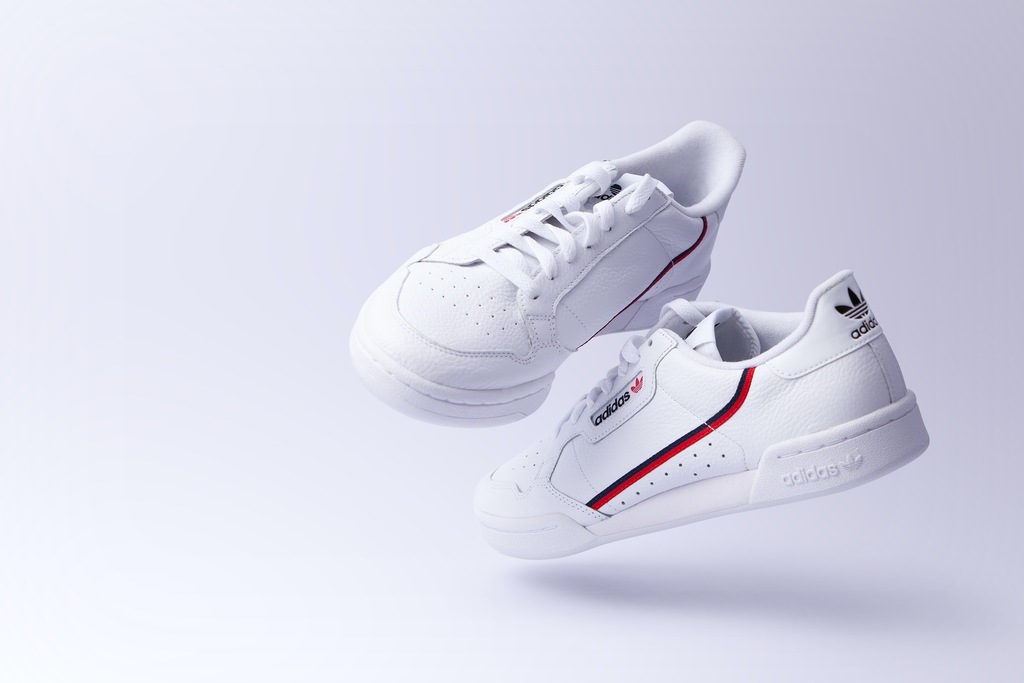
Use a clean and uncluttered background that doesn’t distract from the product. A plain white or neutral-coloured background is commonly used in e-commerce product photography to create a minimalist and professional look. Consider using a product photography tent or seamless paper rolls to achieve a clean backdrop.
4. Consider Product Composition
Pay attention to how the product is framed within the photo. Use the rule of thirds or other composition techniques to create a visually appealing and balanced image. Highlight the main features of the product and showcase it from different angles to give customers a thorough understanding of what they’re buying.
5. Optimize Focus And Depth Of Field
Ensure that your product is in sharp focus, especially on key details and features. Use a smaller aperture (higher f-stop number) to increase the depth of field and ensure more of the product remains in focus. Consider using macro lenses for capturing close-up shots with intricate details.
6. Use A Tripod
To eliminate camera shake and produce sharp images, use a tripod or stabilizing mechanism. This helps maintain image stability, especially in low-light situations or when longer exposure times are required. A tripod also allows for consistent framing and precise adjustments.
7. Capture Multiple Angles And Details
Provide customers with a comprehensive view of the product by capturing photos from various angles and highlighting important details. Showcase close-up shots of unique features, texture, labelling, or any relevant product information. This allows customers to better understand the product’s design and quality.
8. Shoot In Raw Format
If your camera supports it, shoot in RAW format instead of JPEG. RAW files retain more image data, allowing for greater flexibility in post-processing and producing higher-quality final images.
9. Editing And Retouching
After capturing the photos, perform basic editing and retouching as needed. Adjust the exposure, contrast, colours, and sharpness to enhance the image. However, be careful not to over-process the images, as it can lead to an unrealistic representation of the product.
10. Optimize Image Size And Format
Resize your images to an appropriate size for online display to optimize website performance and faster loading times. Save the images in a widely supported web format like JPEG, balancing image quality with file size.
11. Test And Iterate
Continuously assess the results and make improvements based on customer feedback or your own analysis. Pay attention to what works best for your products and target audience, and refine your photography techniques accordingly.
By following these tips and focusing on the quality and presentation of your product photos, you can effectively showcase your products, increase customer engagement, and enhance the overall shopping experience on your e-commerce platform.
25+ Creative Ideas for Modern Product Photography
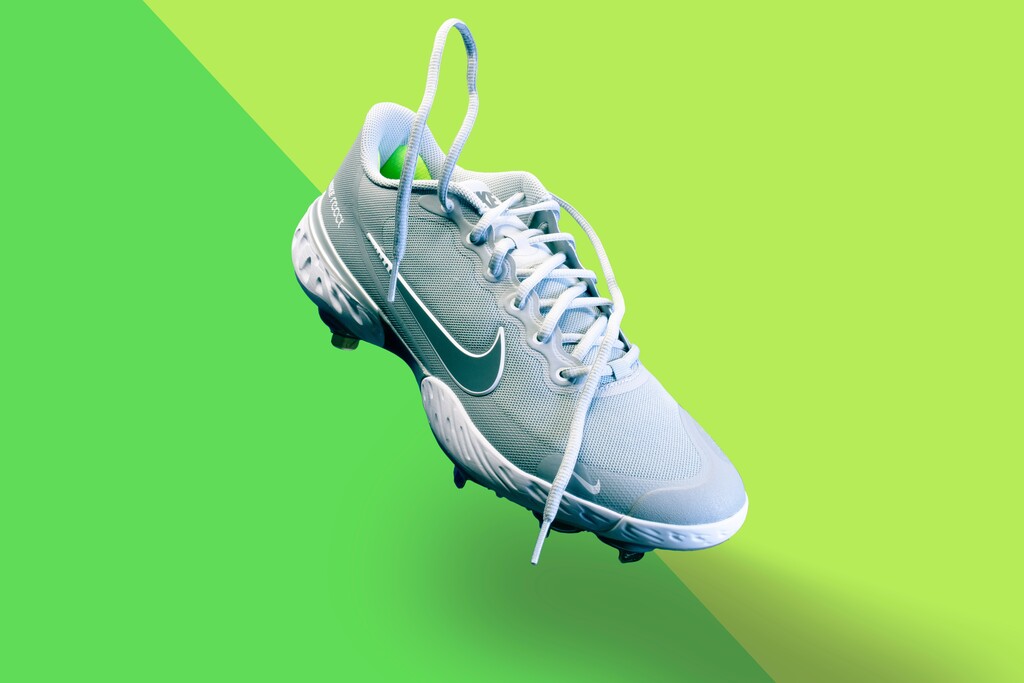
Here are some creative ideas for modern product photography:
- Colorful and Vibrant: Use bold and vibrant colours that pop to create an eye-catching image. Play around with complementary or contrasting colours to make the product stand out.
- Reflections: Incorporate reflections by placing the product on a reflective surface, such as a mirror or a shiny tabletop. This adds depth and visual interest to the composition.
- Motion Blur: Capture the product in motion for a dynamic effect. Use a slow shutter speed to create intentional motion blur, highlighting the product’s movement or functionality.
- Macro Photography: Capture intricate details of the product with a macro lens. Zoom in on textures, patterns, or small elements, revealing the product’s unique features.
- Creative Use of Shadows: Integrate interesting and dramatic shadows into your composition to add a sense of mystery and depth. Experiment with different lighting angles to create intriguing shadow patterns.
- Minimalist Flat Lay: Arrange products in a clean and minimalist flat lay composition on a neutral background. This simple and stylish approach allows the product to be the focal point.
- Product in Action: Show the product being used or interacted with in real-life situations. For example, if it’s a kitchen appliance, capture it in use while cooking a meal.
- Unconventional Angles: Experiment with shooting from unconventional angles to present the product in a unique way. Shoot from above, below, or from interesting perspectives to create a fresh and modern look.
- Lifestyle Context: Place the product in a real-life context to help customers envision themselves using it. For instance, if it’s a camping gear, shoot it in a natural outdoor setting.
- Levitating Product: Create the illusion of a levitating product by using clear acrylic stands, fishing wire, or editing techniques. This adds a touch of magic and intrigue to the image.
- Double Exposure: Combine the product with an unrelated image or texture through the use of double exposure techniques, either during shooting or in post-processing. This creates a visually stunning and artistic effect.
- Transparent Product: Showcase the inner workings or intricate details of the product by photographing it against a transparent or translucent background.
- Contrasting Textures: Pair the product with contrasting textures to create visual interest. For example, if it’s a sleek electronic device, place it on a rustic wooden surface to create a juxtaposition of textures.
- Interactive Elements: Incorporate interactive or dynamic elements into the composition. This could include hands touching or having or interacting with the product, creating a sense of engagement.
- Out of Context: Place the product in unexpected or unusual settings that are unrelated to its intended use. This can create intrigue and capture attention.
- Environmental Sustainability: If your product aligns with eco-friendly values, incorporate natural elements or reusable materials in the composition to convey sustainability.
- Conceptual Photography: Create conceptual images that convey the product’s purpose or message through symbolism and visual metaphors.
- Silhouette: Capture the product as a silhouette against a bright background. This creates a striking and dramatic effect, emphasizing the product’s shape and form.
- Multiple Products: Display a series of related products together in an artistic arrangement. This can help showcase product variations or create a visually appealing collection.
- Unexpected Scale: Play with scale by juxtaposing the product alongside objects of different sizes. This can create a sense of intrigue and emphasize the product’s dimensions.
- Creative Product Packaging: Highlight the product’s packaging design by incorporating it in the composition, showcasing its aesthetic and appeal.
- Pop Art Inspired: Use bold colors, patterns, and geometric shapes inspired by pop art to create a visually impactful and modern image.
- Product Splash: Capture a dynamic shot of the product being dropped into water or another liquid, creating a splash effect. This can add a sense of energy and excitement.
- Cinematic Style: Use cinematic lighting and composition techniques to create a moody and atmospheric image that evokes emotions and tells a story.
- Reflections in Water: Place the product near or partially submerged in water to capture reflections and create a serene and surreal effect.
Remember to stay true to your brand’s identity and target audience while incorporating these creative ideas. Adapt them to suit the specific product and its unique selling points. The goal is to create visually captivating and engaging product images that stand out in the crowded e-commerce space.
Here are 10 detailed tips to conquer eCommerce product photography:
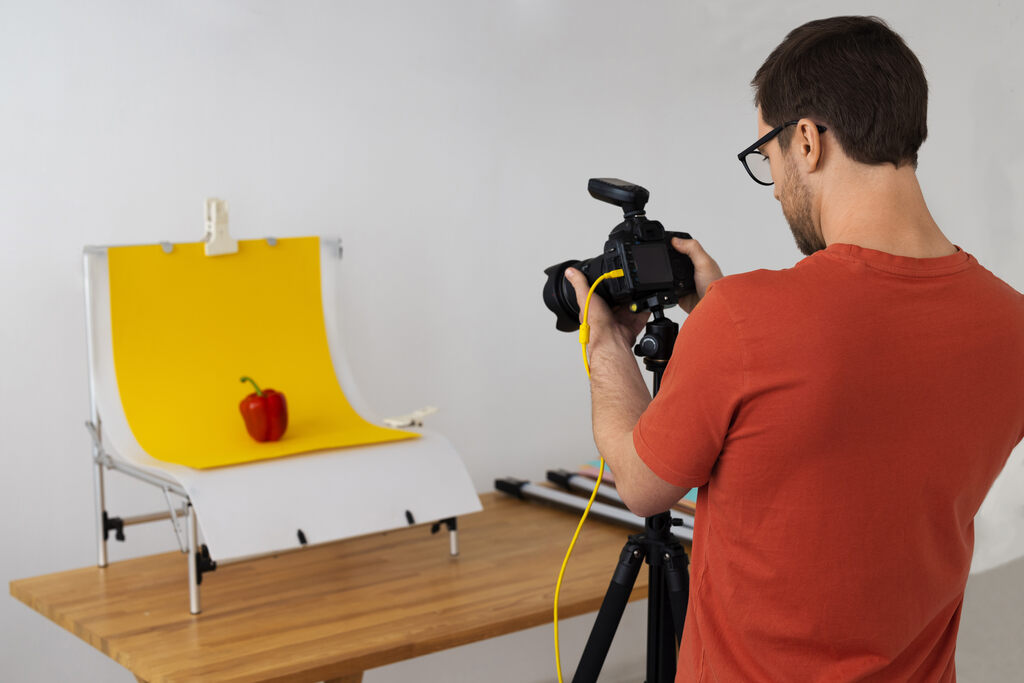
Mastering this skill is essential for attracting customers and boosting sales. Here are 10 tips to conquer eCommerce product photography: plan and prepare, invest in proper lighting, use a tripod, optimize depth of field, capture multiple angles, show scale and proportions, pay attention to composition, edit with care, optimize image file sizes, and maintain consistency. Let’s delve into each point to enhance your product photography game.
1. Plan And Prepare
Before starting your product photography session, plan out the shots you want to capture and gather all the necessary equipment, props, and styling elements. This includes selecting appropriate backgrounds, lighting equipment, and any additional props that will enhance the product’s appeal.
2. Invest In Proper Lighting
Good lighting is crucial for high-quality product photography. Consider using diffused natural light from a window or invest in artificial lighting options like softboxes or umbrella lights. Avoid harsh shadows and overexposure by positioning the lights at the correct angles.
3. Use A Tripod And Remote Shutter Release
To achieve sharp and clear images, use a tripod to stabilize your camera. This ensures consistent framing and eliminates the risk of camera shake. For even greater stability, use a remote shutter release or the self-timer feature to avoid touching the camera during exposure.
4. Optimize Depth Of Field
Adjust the aperture setting on your camera to control depth of field. For product photography, you generally want a larger depth of field to keep the entire product in focus. Use a higher f-stop number (e.g., f/8 or higher) to achieve this.
5. Capture Multiple Angles
Provide customers with a complete perspective of the product by capturing images from various angles. Showcase the product’s front, back, sides, and any important features or details. This helps buyers make more informed decisions when purchasing online.
6. Show Scale And Proportions
Display the product in a way that conveys its size and proportions accurately. Include other objects or human hands in the frame to offer a sense of scale. This helps customers better visualize the size of the product, especially for items like furniture or electronics.
7. Pay Attention To Composition
Utilize composition principles like the rule of thirds, leading lines, and negative space to create visually appealing product photos. Experiment with different arrangements and perspectives to capture attention and draw focus to the main subject.
8. Edit With Care
Use photo editing software like Adobe Lightroom or Photoshop to enhance the images. Make subtle adjustments to brightness, contrast, sharpness, and color accuracy. However, avoid excessive editing that may misrepresent the product’s appearance.
9. Optimize Image File Sizes
Compress the final images to optimize their file sizes for web usage. Large file sizes can affect website loading speeds, leading to poor user experience. Use compression tools or save the images in web-friendly formats like JPEG, finding a balance between image quality and file size.
10. Consistency Is Key
Maintain a consistent style and aesthetic across all your product photos. This creates a cohesive and professional appearance for your eCommerce store. Consistency also helps build brand recognition and trust among customers. Establish a visual identity and stick to it throughout your product photography.
By following these tips and practising consistently, you’ll be able to conquer eCommerce product photography and create visually appealing and engaging images that entice customers and drive sales. Remember, product photography is an ongoing process of improvement, so continue to learn, experiment, and refine your techniques to stay ahead in the competitive eCommerce market.
What Are the Benefits of Taking Good Ecommerce Product Photos?

Here are the detailed benefits of taking good e-commerce product photos:
1. Increased Sales
Clear and high-quality product photos play a significant role in influencing purchasing decisions. When customers see well-presented images that accurately showcase the product’s details, features, and benefits, they are more likely to be engaged and motivated to make a purchase. High-converting product photos can lead to increased sales and revenue for your e-commerce business.
2. Enhanced Brand Image
Good product photos contribute to building a strong brand image and identity. Consistently showcasing your products with high-quality images demonstrates your commitment to professionalism, aesthetics, and attention to detail. This helps to establish trust with potential customers, differentiate your brand from competitors, and create a positive perception of your business.
3. Improved Customer Experience
Clear and visually appealing product photos provide customers with a more comprehensive understanding of the product they are considering. When customers can examine the product from multiple angles, view its key features, and gauge its size and proportions, they feel more confident in their purchasing decisions. This leads to a better customer experience and reduces the likelihood of product returns or dissatisfaction.
4. Increased Website Engagement
Eye-catching product photos can attract and retain users on your e-commerce website. When visitors encounter visually appealing product images, they are more likely to browse through your product catalogue, explore different offerings, and spend more time on your website. This increased engagement improves the chances of converting visitors into customers.
5. Social Media And Marketing Impact
The quality of your product photos directly influences the success of your social media marketing efforts. Users are more likely to share, like, and comment on engaging and high-quality product images, increasing the reach and visibility of your brand. Compelling product photos also serve as valuable marketing assets that can be utilized across different platforms, such as your website, email campaigns, and advertising materials.
6. Competitive Advantage
In the highly competitive e-commerce landscape, distinguishing your products from the competition is crucial. By investing in good product photography, you stand out from the crowd and make a strong impression on potential customers. High-quality product photos convey professionalism and quality, giving you a competitive edge over businesses with subpar or generic imagery.
7. Better SEO And Search Visibility
Optimizing your product images with relevant alt tags and descriptive filenames can positively impact your search engine optimization (SEO) efforts. Well-optimized product photos help search engines understand the context and relevance of your products, leading to potential improvement in organic search rankings and visibility. This can attract more organic traffic to your e-commerce website.
Taking good e-commerce product photos yields a range of benefits including increased sales, enhanced brand image, improved customer experience, higher website engagement, greater social media impact, a competitive advantage, and improved SEO. Investing in high-quality product photography is an essential aspect of running a successful e-commerce business in today’s visually-driven online marketplace.

